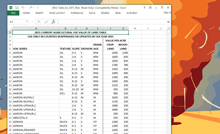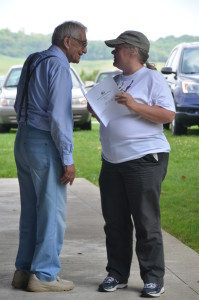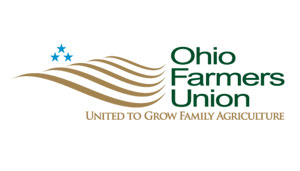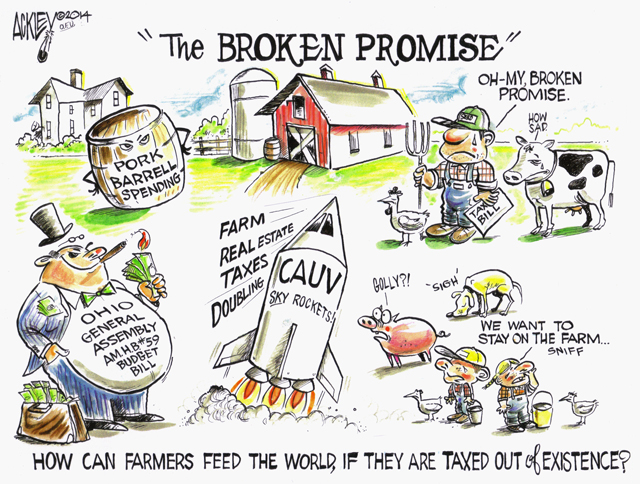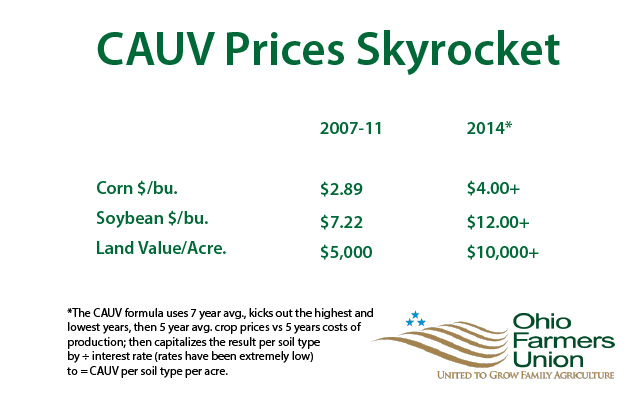Ohio’s Farmland Property Tax Problem, Frack Waste Key Issues
COLUMBUS – From opposition to the Obama Administration’s proposed Trans-Pacific Partnership to advocacy for further reform in the way farmland is taxed in Ohio, the Ohio Farmers Union announced 2016 policy priorities today that touch both state and federal government.
OFU President Joe Logan said that the Farmers Union is one of the few remaining farm organizations that looks out exclusively for the independent, family farmer.
He said that on issues like international trade, government-sponsored commodity checkoffs and many issues in rural Ohio arising because of fracking, OFU’s stance is rooted in “looking out for the little guy.”
“Neither the National Farmers Union, nor the Ohio Farmers Union, have been captured by huge multi-national corporate interests or the ongoing trend for big business consolidation in agriculture,” Logan said.
“Our policy priorities are different. If you’re running a family-sized farm or working to build a local or regional food and fiber network, OFU puts your interests first.”
Two highlights from this year’s priorities are proposed reforms to Current Agricultural Use Valuation and the standards for fracking waste disposal wells.
CAUV is the system for taxing farmland that is currently in production. It was enacted in the 1970s and values farmland across Ohio according to its agricultural value rather than a general market value. CAUV has kept much of Ohio’s farmland from disappearing into urban and suburban sprawl and has helped farm families across the state continue to work their farms. Since the end of the Great Recession, farm families in Ohio have seen their CAUV assessments increase 50-300 percent.
OFU is backing S.B. 246 and H.B. 398, both pending in their respective houses of the Ohio General Assembly. Logan said both bills would update the complex formula used to determine CAUV land value to better reflect changes to the economy since the Great Recession. The wild fluctuations experienced over the past several years would be taken out of the system, legislators hope.
OFU is also calling on the Kasich Administration to change Ohio’s regulations concerning the deep wells used around the state to dispose of waste from fracking. This waste comes from Ohio’s gas and oil production as well as that of neighboring states.
Specifically, the 4,000-member family farmer group wants a moratorium on so-called Class II injection wells used for frack waste. OFU wants any new frack waste disposal wells to be built and regulated under Class I standards. Along with ensuring the wells would be built more robustly, Class I wells are regulated by the Ohio Environmental Protection Agency rather than the Dept. of Natural Resources.
In all, OFU is unveiling nine 2016 policy priorities. Please follow this link for a document outlining them in their entirety.
